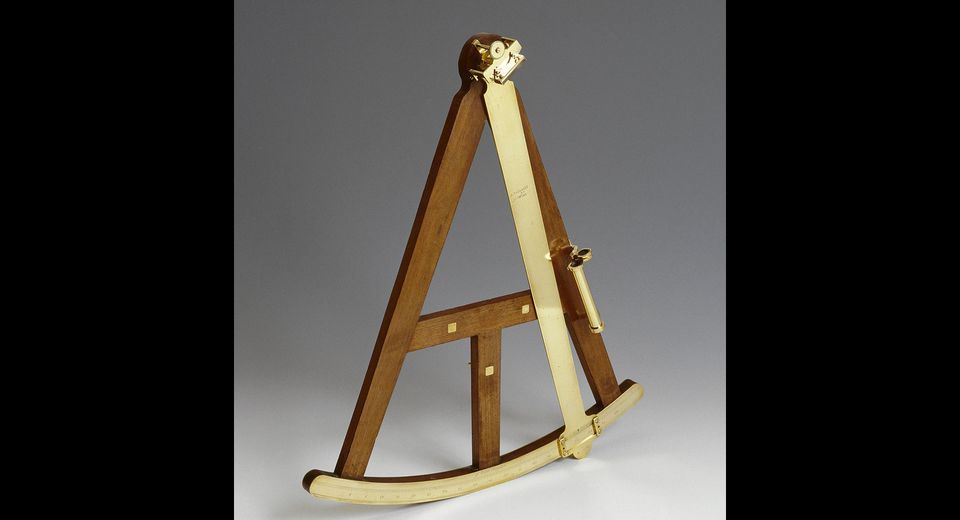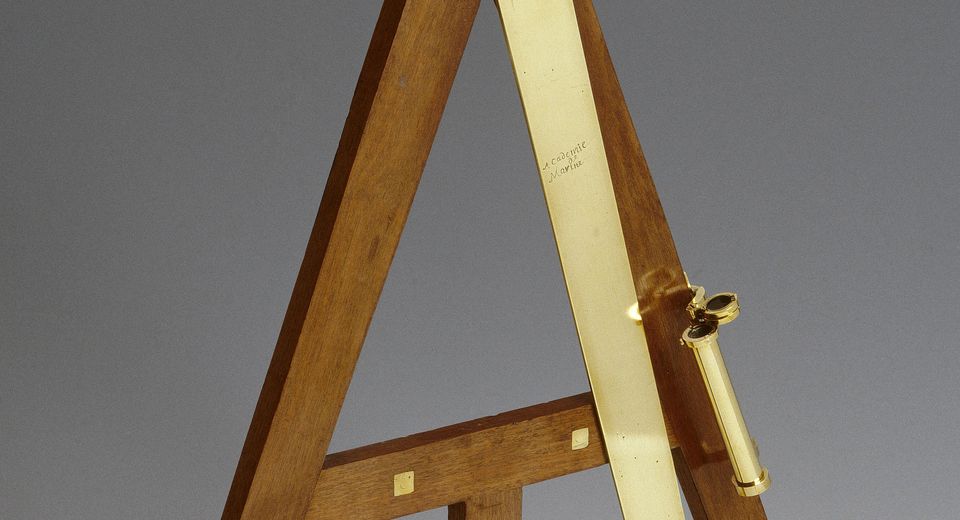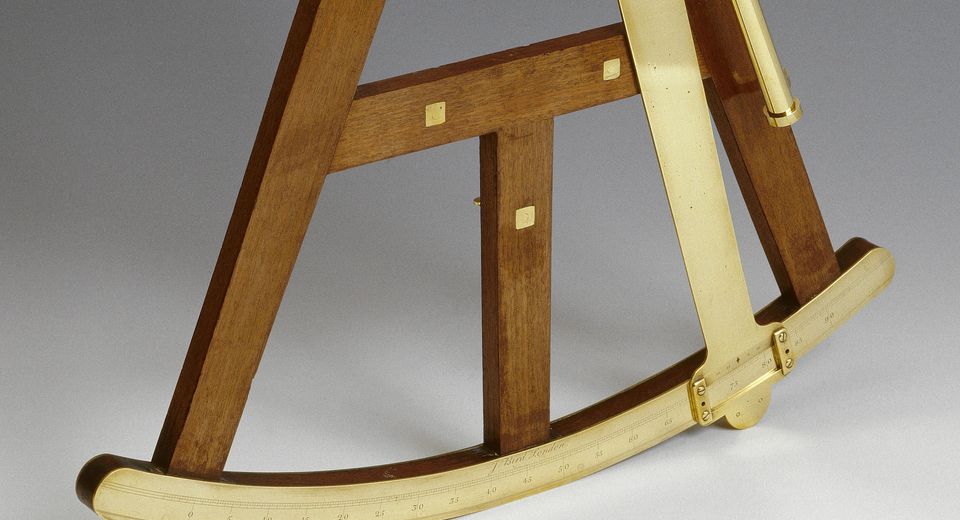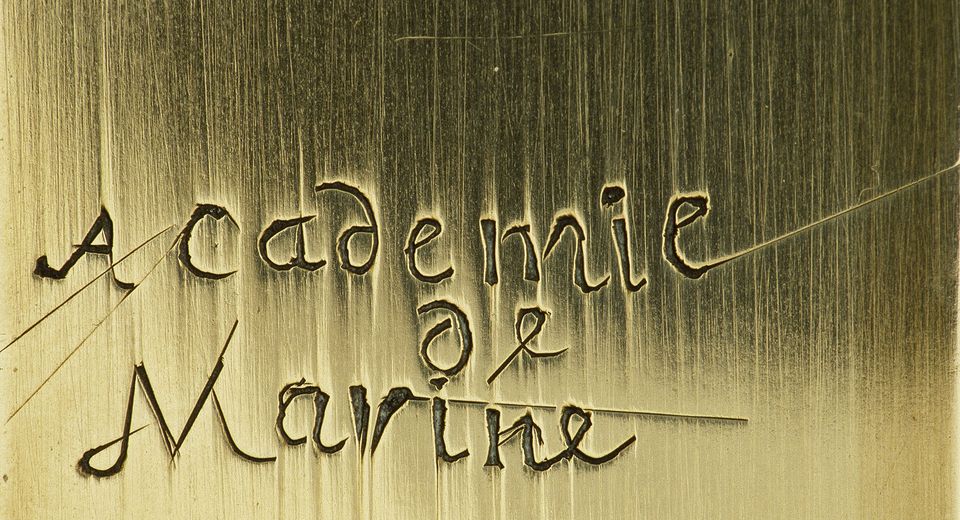Octant
Brest
An octant is a navigation instrument used to measure the angle of a star so as to make certain of the ship’s position. This one comes from the Naval Academy, founded in Brest in 1752.
Naval Academy and navigation instruments
The 18th century marked a turning point in European thought. Scientific academies became centres for the furtherance of knowledge. Established in Brest in 1752 with little prior planning, the Naval Academy focused on research and development in the naval sector. Its library, along with the dissertations, instruments and prototypes it generated, was made available to officers and revolutionised practices. These items are also at the origin of our collections.
Determining position at sea was one of scientific research’s major concerns at the time. The Academy worked to improve navigation instruments and develop a method for calculating longitude. Its efforts testify to the painstaking thought that went into providing them with the accuracy that was so essential: An error of no more than half a degree in a ship’s position corresponds to 30 nautical miles, i.e. 55 kilometres!
The octant, which made its appearance in 1731, enabled measurement of a celestial body’s height above the horizon with an accuracy of around 1 or 2 arc minutes, a margin of error of 1 or 2 nautical miles. Expanding its measurement capacities from 90 to 120 degrees resulted in the appearance of the sextant in 1758.
The Naval Academy (1752-1793)
In the 1740s, a group of officers based in Brest got together under the supervision of Artillery Captain Bigot de Morogues (1706-1781) in order to work on compiling a naval dictionary. The initiative was similar to Diderot and d’Alembert’s Encyclopaedia (1751-1772).
Its meetings were institutionalised in 1752 with the foundation of the Naval Academy, which became the Royal Academy in 1769. The Academy was provided with premises in the shipyard and a budget to be devoted to creation of a library, a collection of instruments and a models room. Studies focused on two major themes: standardisation of shipbuilding and improvement of navigation instruments. Its members also worked on such questions as ship manoeuvrability, naval medicine, hygiene, hydrography, mathematics, physics and astronomy.
In addition to research, the Academy was responsible for disseminating knowledge among officers. Among other things, it participated in the preparation of the scientific expeditions that set out from Brest in the late 18th century. It was dissolved under the Revolution. The Ministry of Defence’s Historical Department’s site in Brest conserves its entire collection: library and archives.
Collection highlight
The essential works to see during your visit to the Musée national de la Marine in Brest, Port-Louis, Rochefort, Toulon, and soon in Paris.




